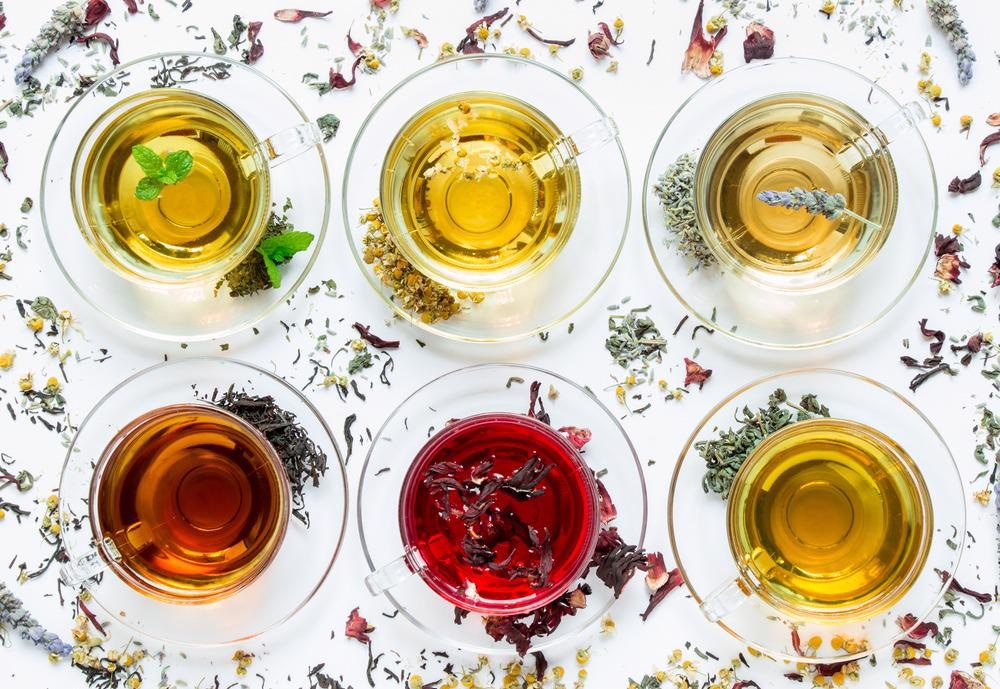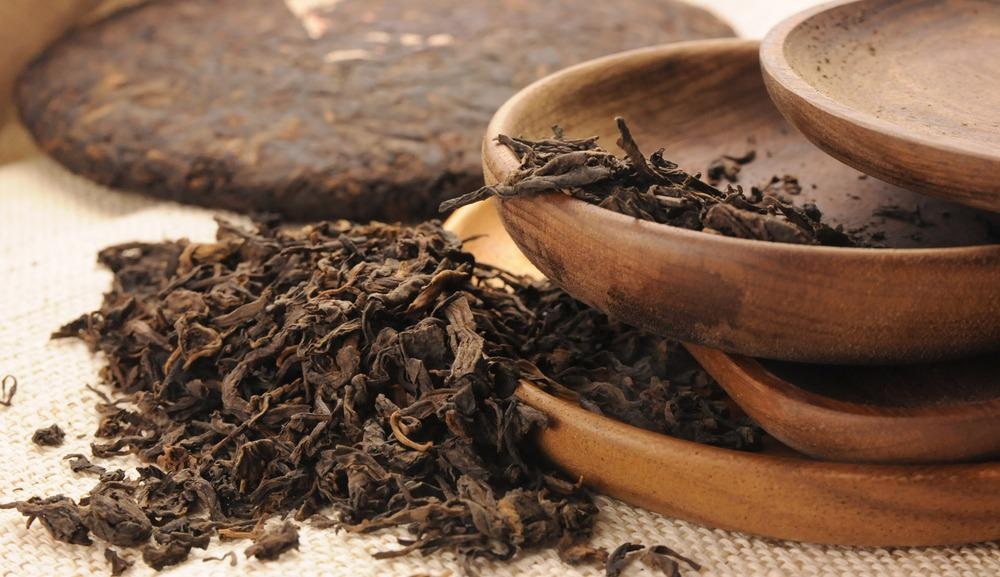Tea, scientifically known as an infusion of the leaves of the tea bush, Camellia sinensis, is better known as the cup that cheers and revives. Being the single most widely consumed non-water beverage, it comes in several varieties and textures, with their different tastes and strengths. These include green tea, oolong, black tea, and Pu-erh tea.
In the USA, black tea is the most widely consumed, at about 84%, while 15% of tea drinkers take green tea. While all these come from the tender leaves of the tea bush, they are produced by different processes.
Two chief varieties of the tea bush are cultivated, namely, Camellia sinensis var. sinensis and Camellia sinensis var. assamica. The former originated in China and yields both white and green tea.
The latter is from Assam, India, and some parts of southeast Asia. It is processed mainly to black tea. Pu-erh tea is made from this variety, in Yunnan, China.
There are five types of tea, based on the amount of oxidation that occurs during processing. In all of them, the leaves are allowed to dry, or ‘wither’, before enzyme activation. Within tea leaves, both the flavonoids of the category flavan-3-ol monomers, or catechins, and the polyphenol oxidase (PPO) are present, but in different compartments.
The rolling, crushing, and breaking that occurs with tea processing cause the cell compartments to break down. As a result, catechins form theaflavins and thearubigins by condensation into dimeric and polymeric forms, respectively.
This oxidative process is called fermentation by workers in the tea industry. It is brought to a stop by steaming, firing, or baking the tea leaves, which inactivates the PPO.

Image Credit: Victoria Kurylo/Shutterstock.com
White tea
White tea comes from the unopened buds and very young leaves of the bush. These are steamed or fired, inactivating PPO, before drying them. This means they have high catechin concentrations, similar to fresh tea leaves.
Green tea
Green tea, produced from more mature tea leaves than white tea, contains an abundance of catechins, though the cultivar and the manufacturing facility determine the final content and composition.
The tea leaves are withered first and then steamed or fired, before a final rolling and drying. Even with similar catechin amounts, antioxidant activity can be very different between green and white teas because other antioxidants have been found to be abundant in teas.
Matcha is a form of finely powdered green tea.
To read more about the health benefits of green tea, click here.
Oolong tea
Also called oolong or Wulong tea, these comprise slightly bruised leaves so that the flavor created by PPO is partly released. The leaves are oxidized more than white or green tea, and therefore their catechin, theaflavin, and thearubigin content is also greater than that of black tea but less than white or green teas, neither of which are fermented much.
Black tea
Black teas are completely rolled or broken to allow catechins to oxidize by ensuring full contact with PPO. This is followed by drying, or by heating and crushing. The complete pre-drying oxidation ensures a low content of flavan-3-ols such as (-)-epigallocatechin gallate (EGCG).
Conversely, it is rich in theaflavins (2%-6% of extracted solids) and thearubigins (>20% of extracted solids), with the former having higher antioxidant activity than EGCG.
Pu-erh tea
Also called pu’er, pu’erh, or Chinese black tea, this is produced in Yunnan province, using the larger (more mature) leaves of Camellia sinensis var. assamica.
One variety of pu’erh tea is raw or aged pu’erh tea, where the leaves are heated and dried before dampening. Finally, they are fired in a pan and compressed. The product is stored in a carefully adjusted environment where it can age over decades.
Apart from PPO oxidation, fungus-mediated fermentation (using Aspergillus niger) is also sometimes included. This speeds up the aging process, finally yielding ripened pu-erh tea.

Image Credit: HelloRF Zcool/Shutterstock.com
Bioactives in tea
There are a number of bioactive chemicals in tea, including flavonoids, fluoride, and theanine. Others include pigments like carotenoids and chlorophyll, alkaloids like caffeine, theophylline, and theobromine, lignans, and carbohydrates, as well as proteins, lipids, and vitamins.
A typical cup of green tea usually contains 250–350 mg solids. Catechins make up 30% to 42% by weight of brewed green tea, while 3–6% is caffeine. Catechins include (-)-epicatechin (EC), (-)-epigallocatechin (EGC), (-)-epicatechin gallate (ECG), and (-)-epigallocatechin gallate (EGCG).
EGCG is the most potent catechin, and much of the anticarcinogenic effect of green tea is predominantly credited to it. Some catechins undergo oxidation or condensation to form dimers or polymers. These include theaflavins (theaflavin, theaflavin-3-gallate, theaflavin-3′-gallate, and theaflavin-3-3′-digallate) (3–6%) and thearubigins (12–18%) during fermentation of fresh tea leaves and are responsible for the bitter taste and dark color of black tea.
Flavonoids are polyphenols, most abundant in fresh tea leaves. They comprise six classes, namely, flavan-3-ols (catechins), anthocyanidins, flavanones, flavonols, flavones, and isoflavones. They have anti-inflammatory, antiviral, and antioxidant properties. They also regulate detoxifying enzymes and have immunostimulatory attributes, besides reducing platelet aggregation.
Flavonols include glycosides such as kaempferol, quercetin, and myricetin, and these are not significantly affected by processing. These are poorly absorbed but are responsible for much of the health benefits of tea.
Caffeine is present in all teas but at varying concentrations. It stimulates the central nervous system, and opposes the action of adenosine A2A receptors, thus protecting dopamine-secreting neurons. Adenosine is an inhibitory neurotransmitter, and therefore the effect of caffeine is stimulatory.
Fluoride builds up within tea leaves, and thus the content is greatest in the oldest leaves. Only the bud or the top two to four leaves on the tea bush are taken to make a tea of the highest quality. Fluoride is responsible for the beneficial effect of daily tea consumption on dental caries.
Fluoride toxicity is unlikely to occur since green, oolong, and black teas contain the same amount on daily consumption as dentists recommend for dental health. White tea has a lower content. The lower the fluoride content, the higher the appearance, taste, and flavor of the tea.
Theanine is an amino acid that is not found in proteins, making up about 1-2% of the dry leaves. It has high bioavailability, almost 100%, and crosses the blood-brain barrier.
Theanine looks similar to glutamate in its chemical structure. Glutamate is an inhibitory neurotransmitter and is implicated in memory processing. It is competitively inhibited by theanine, which thus prevents nerve cell death following brain ischemia.
Cardiovascular benefits
As a result, tea consumption is linked to lower rates of cardiovascular disease, a drop in cholesterol levels, as well as anti-inflammatory, anti-oxidant, and anti-hypertensive attributes. Increasing daily intake by three cups (125 mL/cup) a day pushes down the stroke/brain hemorrhage risk by about a fifth, cardiovascular disease by 27%, and cardiac deaths/total deaths by over a quarter.
Green tea brought down cardiac deaths, strokes, and total deaths, while black tea reduced the cardiovascular risk. Green tea extract has been introduced into mouthwashes and toothpaste to reduce dental plaque and gingivitis, better than fluoride- or triclosan-containing toothpaste. Conversely, green tea extracts may cause disorders of the digestive tract and liver toxicity.
The risk of cardiovascular mortality is 33% less with the highest level of green tea consumption vs the lowest, along with a drop in total deaths by a fifth. Black tea, however, reduced total deaths by a tenth. Flavonoids are thought to underlie this effect, via their anti-inflammatory, anti-oxidant, and vasodilatory activity.
Tea drinkers also have a lower risk of type 2 diabetes mellitus, though the mechanisms are complex. Black and green tea also reduced blood pressure, perhaps because flavonoids inhibit the synthesis of the vasoactive compound angiotensin II.
Though animal studies seem to show a role in preventing carcinogenesis, current evidence is lacking for any anti-cancer effect in humans.
Metabolic benefits
It is possible that these compounds are implicated in regulating the energy balance, the metabolism of glucose and lipids, peripheral tissue sensitivity to the actions of insulin, the composition of the body, as well as body temperature.
Black tea infusions reduced fasting lipid profiles and fasting blood glucose concentrations. So did green tea consumption, associated with improved lipid levels and lower blood pressures. Black and green tea may also improve endothelial function, while green tea also has antioxidant activity, mostly via EGCG, theaflavins, and thearubigins.
Tea consumption may also be linked to a lower risk of dental caries, while the risk of renal calculi is lowered by 11% at the highest level of tea intake compared to the lowest. However, tea is high in oxalates, which requires further examination.
Mental health benefits
Tea consumption is also linked to higher cognitive performance in older people compared to non-tea drinkers, though the evidence is largely observational. Tea drinking may interact with some drugs such as anticoagulants, warfarin, and certain cardiovascular drugs.
Tea drinking improves mood for a short time and reduces the risk of depression. However, high tea consumption is not recommended in pregnancy because of the increased risk of miscarriage and low birth weight.
Conclusion
Tea drinking is mainly a lifestyle habit, consumed as a pick-me-up, but it also has important health benefits. More studies are underway to understand these effects and exploit them for the good of the community.
References:
Further Reading
Last Updated: Jan 11, 2022